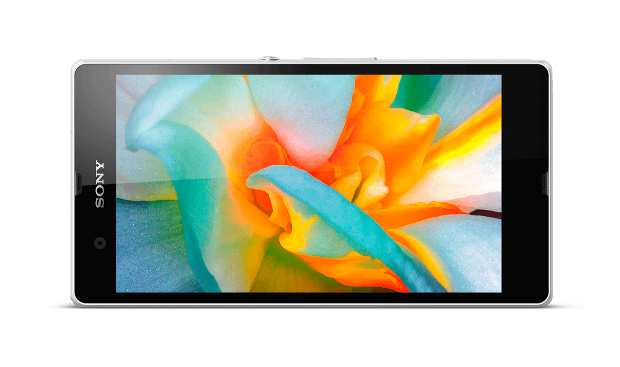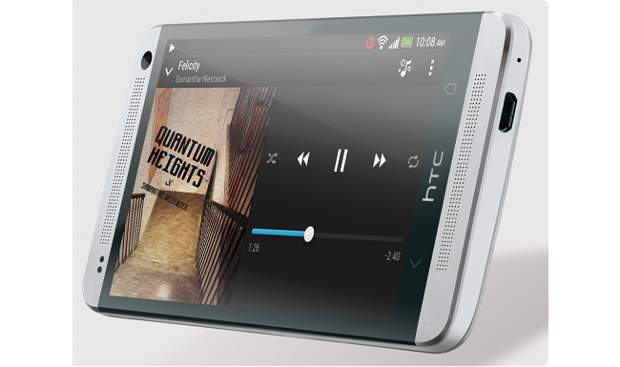Last month, Sony Mobile won accolades and appreciation by introducing its first quad core smartphone – Xperia Z. Featuring a large 5 inch screen, the phone is packed with great hardware and shows a lot of promise to give a good head start to the company this year. Just a month after that, HTC decided to introduce the new stylish smartphone dubbed One. And several jaws dropped.
HTC One certainly looks seriously attractive and sleek because of the all-aluminium body and edge to edge Super LCD 3 display. This device also debuts Qualcomm’s new Snapdragon 600 series mobile Processor inside.
However, the most interesting highlight is the Ultrapixel camera that is touted to deliver sharper and less noisy images. However, the real battle is about all the features and not just one aspect. Here is our head to head comparison of the specifications leaving out real-world performance for the moment.
Design
Sony Mobile and HTC are known to pour their creativity in the products they offer to consumers. Sony Mobile takes the Xperia NXT series to the next level with the new Xperia Z smartphone that also promises resistance against water spills and dust.
The Xperia Z obviously is a bit bigger due to a large display size but it’s still merely 7.9 mm thin and weighs 146 grams. On the other hand, the HTC One is 9.3 mm thick despite the sleek aluminium chassis and still weighs just 143 grams.
If placed side by side, the HTC One would look a bit longer and sleeker compared to the Xperia Z. Both smartphones flaunt really modern design and looks. The only difference between the devices is that the HTC One features the speaker mesh above and below the screen to deliver better quality audio.
It would be really difficult to judge which phone looks better but due to the anodized aluminium chassis, the HTC One might just bag the prize for being a bit more good looking than the Xperia Z.
Operating system
HTC One debuts the Sense 5.0 user interface along with a new feature called BlinkFeed. The new user interface is slick and BlinkFeed basically brings everything to the homescreen, viewable in a widget format.
Both smartphones feature Android 4.1.2 Jelly Bean operating system upgradable to Android 4.2.x Jelly Bean update. Sony Xperia has its own TimeScape user interface with slightly tweaked icons.
Hardware
The Xperia Z features a 5 inch TFT LCD touchscreen display with 1920 x 1080 pixel resolution. Therefore it offers a Pixel density of 440 pixels per inch. Sony Mobile has packed the display tighter with the rest of the chassis to prevent water or dust intrusion. The company claims to have used shatter proof and scratch-resistant glass.
The display’s contrast and colour profiles are powered by Sony’s Mobile Bravia Engine 2. Meanwhile, the HTC One features a 4.7 inch Super LCD 3 display manufactured using Corning Gorilla Glass 2 technology. The latest generation Super LCD 3 display is slimmer, stronger and resistant to scratches. It is the same quality display as used in the HTC One X.
The default Resolution of the HTC One is 1920 x 1080 pixel and thus offers pixel density of approximately 468 pixels per inch. Both smartphones support multi-touch, though Sony Mobile claims that the Xperia Z can support up to ten fingers at a time.
Sony Mobile and HTC have used different chipsets from the same company – Qualcomm. The Xperia Z happens to be Sony Mobile’s first quad core smartphone. Inside the chassis, Xperia Z houses a quad core 1.5 GHz Qualcomm Snapdragon S4 Pro APQ8064 paired with Adreno 320 graphics chip. This is Qualcomm’s top of the line quad core mobile processor from last year’s line-up. HTC delayed the One by a month and introduced it with a quad core 1.7 GHz Qualcomm Snapdragon 600 mobile processor paired with an Adreno 320 graphics chip. The new Snapdragon 600 processor has been manufactured with a low power 28 nm silicon fabrication technology and offers 20 per cent speed boost at the same level of power consumption. That means it will be slightly faster than the Snapdragon S4 Pro processor used in the Xperia Z in terms of benchmark records.
How real world performance varies is totally dependent on the usage pattern. Both smartphones will feature 2 GB RAM to provide enough memory Bandwidth for speeding up the user interface and also run resource heavy apps easily.
The major difference lies in on-board storage-the Xperia Z will feature only 16 GB space compared to HTC One flaunting 32 GB or 64 GB storage space. However, the Xperia Z offers a Memory card slot to accommodate up to a 32 GB micro SD card; while HTC One offers no memory card slot.
At the back of HTC One there are additional dual-microphones dubbed with Sense Voice feature to detect loud ambient noise and boost in-call voice clarity.
Camera
The only reason why HTC One is a bit thicker than the usually slim smartphones is because it features a new HTC Ultrapixel camera dubbed HTC Zoe.
This new camera configuration comprises a 1/3 inch CMOS BSI image sensor that basically captures more light than the usual Sensors to deliver sharper image quality. The Ultrapixel camera features a f/2.0 lens that aims to cover a wider area for capturing more light and creating three times more sensitivity in the 13 Megapixel cameras. There is a 2 axis optical image stabilizer to offer longer exposure timings and deliver high quality images with minimal possible noise and higher sensitivity in low light environments.
So, apparently, Optical Image Stabilization flaunting Nokia Lumia 920 has competition especially in low light environments. Of course you can click High Dynamic Range photos with this camera. The camera can be used to capture 8 frames per second for continuous shooting along with continuous autofocus. HTC has used the ImageChip for providing continuous autofocus, noise reduction and improved colour shading.
The Ultrapixel camera is capable of recording full 1080p HD video at 30 frames per second and an HD video at 60 frames per second. The front facing 2.1 megapixel camera is capable of clicking HDR photos and full 1080p HD video chats.
Sony Mobile’s Xperia Z features the new 13.1 megapixel camera with Sony’s new Exmor RS image sensor at the back and an Exmor R capable 2.2 megapixel camera in the front. The 13.1 megapixel camera module comprises the Exmor RS image sensor that was announced last year and is expected to arrive in products from this year.
The Exmor RS image sensor has the circuitry stacked below the active pixel section where the photodiodes and colour substrates are placed. It offers 30 per cent more light capturing capacity than the usual Exmor R image sensor.
Sony also offers fancy HDR in both still and video imaging. Offering 16x digital zoom, the Xperia Z camera brings burst mode, face detection, red-eye reduction, smile recognition and a plethora of Sony point-and-shoot camera technologies. The back panel camera can record full HD videos and so can the front facing camera.
Both smartphones pack modern image sensors but the real winner can be judged only on the basis of some real world testing. HTC will have a tough time convincing megapixel fanatics that the quality of the image matters more than the megapixel count of the sensor.
Connectivity
HTC and Sony Mobile are aware of the 4G Long Term Evolution cellular technology offered by several mobile operators in different parts of the world. Both devices will feature 4G LTE support apart from high speed 3G network support.
The Xperia Z offers connectivity options by supporting WiFi 802.11 a/b/g/n standards. Meanwhile, the HTC One supports even the most recent 802.11 ac wireless standard to offer high-speed through-put on the 5 GHz band. Oh yes, both smartphones offer dual band WiFi along with WiFi Direct. The Xperia Z gets an edge with WiFi Miracast technology as well, which basically allows the user to directly stream multimedia content over Miracast standard displays. Better location-based services are promised with the GPS module, packing both A-GPS and GLONASS support.
Both smartphones feature Bluetooth 4.0 with A2DP and near field communication chip. The interesting aspect lies in the fact that the HTC One features an Infrared port that helps you turn the phone into a touchscreen remote control for the TV.
Multimedia
HTC One has a dual stereo speaker mesh on the top and bottom of the display. With Beats Audio enhancements, the One features BoomSound that makes use of built-in amplifiers to deliver higher and richer quality audio with less distortion.
Both devices feature active noise cancellation with dedicated microphones but HTC has an extra dual-set at the back to detect ambient noise and boost call quality.
Sony packs its standard set of music related applications and services to let consumers enjoy the best possible audio output with ample preset options. While both offer video players, only HTC One supports DivX and XviD video formats out of the box.
Battery
HTC has packed a 2300 mAh battery to make the phone run longer but has claimed no specific run time when it comes to battery life. On the other hand, Xperia Z features a 2330 mAh battery and the reported battery life of this beastly device is about 14 hours even on 3G networks.
Conclusion
Sony Xperia Z and HTC One are strong models that will have a tough fight in the market where price and availability will play a crucial role.
The HTC One features a fairly new Chipset optimized to deliver better performance with as much battery consumption. Featuring a fairly new design, the HTC One certainly seems more eye-candy than the Xperia Z at this moment. But the real test lies in using both devices out there.
On paper, the HTC One seems to have an edge but appears dodgy when it comes to the camera department and lack of memory card slot. On the other hand, the Xperia Z is set to deliver greater quality of experience with slightly more screen real-estate and a slimmer profile.


